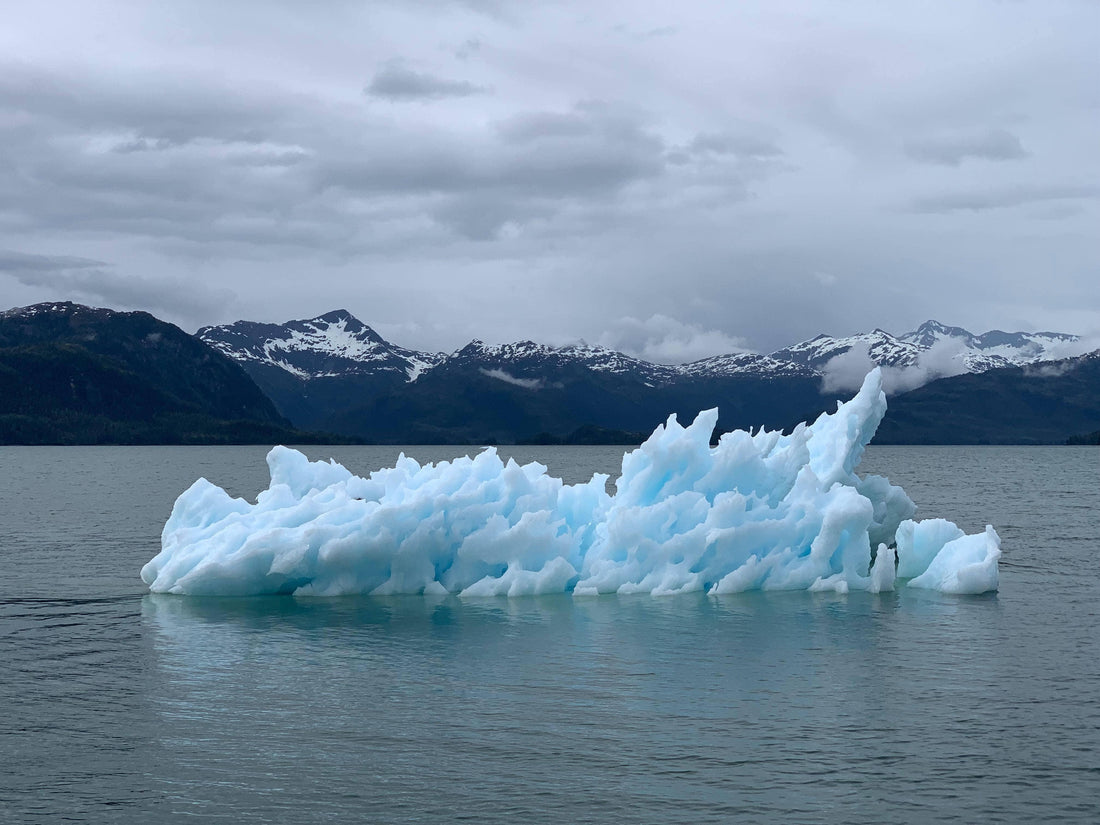
5 Key Pieces of Climate Change Evidence
Share
With sustainable living growing to be at the forefront of public minds, it’s easy for the narrative to become centred around how to be sustainable and neglect the why.
Sure, we all understand that the Earth’s climate has been detrimentally impacted by anthropogenic sources (we had to Google it too), but do we all know the physical evidence driving our move towards sustainability?

Here are 5 key pieces of climate change evidence to bolster the sustainable living narrative.
Extreme Events
Extreme events have seen a marked increase alongside global warming. Events such as hurricanes and floods don’t always come to mind when discussing the evidence and impacts of climate change, but they do present a very real threat to human, animal and plant populations. From 2000 to 2019, the world saw 7,348 major natural disasters where 1.23 million people were killed and $2.97 trillion was lost from the global economy.
Extreme events are exacerbated by climate change in differing ways. Storms, hurricanes and extreme rainfall can originate from the warmer air increasing evaporation. This means the atmosphere contains an increasing amount of water vapour available, which falls as precipitation. Severe storms have increased 40% in the last 20 years and major flood events have more than doubled, leading to increasing risk to local populations.
As a result of climate change, dry places are getting drier, wet places are getting wetter and places at risk of natural disasters are getting riskier. Wildfires burn hotter and for longer, winter storms are hitting harder, hurricanes are becoming stronger, droughts more persistent and heatwaves more frequent.
Rise in Global Temperature
Since records began in 1880, both the hottest years on record fell within the last five years (2020 and 2016). These temperatures have been recorded by humans, but are by no means the extent of our knowledge of past temperatures - ice cores, dendroclimatology (again, Googled it) and lake sediment analysis are among the methods we can use to map out the Earth’s past climate. Whilst it is true that the climate changes through the millennia into glacial and interglacial periods, temperatures since the Industrial Revolution have been climbing at an unprecedented rate.
The main culprits in the rise of global temperature are Greenhouse Gases. Imagine the Earth built herself the perfect greenhouse to trap the Sun’s heat and keep her plants and animals warm enough to thrive and then humans came along and painted layer upon layer of thick sticky CO2, CH4 & CFCs on the greenhouse windows. This is exactly what we have done and this has dramatically increased the amount of heat trapped in the greenhouse and damaged the ecosystems within.
Warming Ocean's & Rising Sea Level's
So the Earth is warming, but where does this heat go? The oceans. Our oceans have absorbed much of the increased heat. The top 100m of ocean has warmed more than 0.33oC since 1969. In a world where we are accustomed to large volumes of change, 0.3 may not seem too drastic, but when you consider that water makes up 71% of the Earth’s surface, 0.3 becomes quite the substantial figure.
With warmer oceans comes melting ice - adding more volume to the oceans and subsequently causing rising sea levels. Global sea levels have risen 20cm in the last century, with the rate since 2000 being nearly double that of the last century. Rising sea levels threatens the global community, with the flattest of all countries, the Maldives, facing the risk of complete submersion by 2085 if no changes or improvements are made.
Ocean Acidification
Not only does the ocean absorb heat, it also absorbs a quarter of all CO2 emissions meaning that as global emissions rise, so does ocean acidification. CO2 reduces the pH of saltwater and the saturation states of calcium carbonate minerals, which are essential building blocks for marine skeletons and shells. The pH of surface ocean waters has fallen by 0.1 on the pH scale, a logarithmic scale where the lower the score, the higher the acidity.
Lower environmental calcium carbonate saturation states can cause dramatic decreases in some calcifying species, including but not limited to shallow and deep water corals, calcareous plankton, sea urchins, clams and oysters.
With more than a billion people relying on food from the ocean as their primary source of protein, ocean acidification threatens not only marine inhabitants, but the job and food security of the global population.
Shrinking Ice Sheets & Glacial Retreat
Again, increased temperatures lead to increased ice melt. Earth’s ice and snow is held in many different forms - from ice sheets to glaciers and snow cover to sea ice. All forms have been affected by human climate interference. For example, the Greenland and Antarctic ice sheets have lost an average of 279 billion tons of ice per year between 1993 and 2019.
One of the secondary impacts of ice and snow cover melt is the decrease in surface albedo. Albedo is the percentage of light that a surface reflects out of the total light received, so a higher albedo reflects more light than a lower. Bright surfaces like snow and ice have high albedos which helps reduce the amount of light and therefore heat absorbed to keep local temperatures low. When the ice melts, the albedo lowers and temperatures rise once again.
While the above may paint a gloomy view of our impact on the Earth and her climate, we believe that education is necessary for the understanding behind why change is essential. Humans have had a detrimental effect on the environment since the Industrial Revolution, so we see it as our responsibility to consciously work towards a lifestyle that prioritises sustainability to lessen our personal impact on the climate and strive to positive changes in consumption, attitude and legislation.
P.s. Sorry for taking your head off, she's quite a big read...
If you want to learn more, check out the resources we used below:
- https://climate.nasa.gov/evidence/
- https://climate.nasa.gov/causes/
- https://onlinelibrary.wiley.com/doi/abs/10.1002/wcc.42
- https://www.usgs.gov/special-topic/water-science-school/science/how-much-water-there-earth?qt-science_center_objects=0#qt-science_center_objects
- https://www.climatehotmap.org/global-warming-locations/republic-of-maldives.html
- https://www.pmel.noaa.gov/co2/story/Ocean+Acidification
- https://www.pmel.noaa.gov/co2/story/What+is+Ocean+Acidification%3F
- https://nsidc.org/cryosphere/sotc/glacier_balance.html
- https://e360.yale.edu/digest/extreme-weather-events-have-increased-significantly-in-the-last-20-years
- https://earthjustice.org/features/how-climate-change-is-fueling-extreme-weather
- https://earthobservatory.nasa.gov/images/5471/seasonal-changes-in-earths-surface-albedo

